#adventuresses
Explore tagged Tumblr posts
Text
Very dashing!

Armored Lady Monday
little goblin archer
full res and more at patreon
351 notes
·
View notes
Text



Happy International Women's Day!
#miss fisher's murder mysteries#mfmm#the adventuresses’ club of the americas#phryne fisher#ms fisher's modern murder mysteries#every cloud productions#peregrine fisher#miss s murder mysteries#su wenli#international women's day#adventuresses
37 notes
·
View notes
Text
Adventuresses with their girlfriends
So for a while I've had racy designs for each of the twelve main D&D character classes with girlfriends. I've actually kind of wanted to share these gals with people for a long time now, but Tumblr's restrictions have made me reluctant. So instead of full images, I'll post sfw previews of a couple of the less racy designs and then links for the rest of them. All of them are human adventuresses showing their sweethearts a good time.

Dashing bard dipping her dwarf girlfriend. https://www.heroforge.com/load_config%3D47043521/

Monk tenderly railing her wood elf sweetheart. https://www.heroforge.com/load_config%3D46603536/
Rest of them available in links below the cut.
Druid and river nymph partaking in some light bondage:
Rogue assuring her air genasi she's a good girl and is doing a great job:
Drow taunting the cleric to give it to her harder:
Fighter plowing her cat-girl girlfriend into the mattress:
Ranger and her dryad sweetie having a tumble in the grass:
Sorceress and tiefling exploring each other:
Wizard letting her tame succubus get handsy (and tailsy):
Paladin giving her bespectacled cat-girl a religious experience:
Warlock fulfilling her fey patron's contract:
And barbarian and elf-queen making unspoken dares at each other:
7 notes
·
View notes
Text


Mary Alice Nelson was born in 1903 on Indian Island, Maine, part of the Penobscot Reservation. The oldest child of a tribal official and a prominent Penobscot artisan, Mary Alice began performing traditional Penobscot dances for tourists when she was 13. Before long, she was making her living dancing on the vaudeville circuit.
She left the limelight behind to study anthropology at the University of Pennsylvania. After only two years, though, the money ran out, so she returned to modeling and dancing, adopting the stage name Molly Spotted Elk. She was a success, causing a sensation everywhere she went, although catering to the attitudes of the day meant dancing in an abbreviated buckskin costume, (or less,) and acting out common stereotypes of Indigenous People. It was during this time that she started a second career as a writer.
It wasn’t long before Hollywood called. Spotted Elk was cast as Neewa, the female lead, in 1930s “The Silent Enemy.” One of Paramount’s last silent films, this groundbreaking production about pre-contact Ojibway life featured an all-Indigenous cast and set out to break stereotypes and myths. Sadly, it was a flop. Spotted Elk would appear in supporting roles in a couple more films, but never again had a lead role.
In 1931 Molly Spotted Elk began performing in France, where she found the audiences to be much more open to actual traditional dances than American audiences had been. She also found love with French journalist John Archambaud. The pair would marry, have a daughter they named Jean, and were by all accounts happy.
Until the war came.
Archambaud was an outspoken anti-Nazi, which made him a target. When Germany invaded, John was separated from Molly and their daughter. They never saw him again. Molly and Jean escaped over the Pyrenees to Portugal – mostly on foot. Jean would later recall, “We walked, we ran, we rode ambulances. A newsman picked us up once, and my mother always claimed it was Howard K. Smith. Adventure always followed her even in adversity.”
Spotted Elk returned to performing in New York, retiring from the stage in the early 1950s. She spent the rest of her life on Indian Island. Mary Alice Archambaud/Molly Spotted Elk died on February 21, 1977. Her writings have been collected into the book, “Katahdin: Wigwam’s Tales of the Abnaki Tribe”, published by the Maine Folklife Center.
16 notes
·
View notes
Photo
Dashing group of ladies!





Art by Xutunzi
6K notes
·
View notes
Text

Adventuresses We Love – Sophie Scholl Sophie Scholl did not set out to be an activist and revolutionary. At the age of 12, she and most of her classmates joined the League of German Girls, the female branch of the Hitler Youth. While initially enthusiastic, she quickly grew disillusioned with the Nazis, a view shared by her family and those within her circle. In 1942, she joined her brother, Hans, in the anti-fascist White Rose movement.
The White Rose practiced passive resistance against the Hitler regime. Their primary “weapon” was leaflets designed to inspire Germany’s intelligentsia to rise up and overthrow the Nazis. On 18 February 1943, Sophie and her brother, Hans, were distributing such leaflets at Ludwig Maximilian University in Munich when their activities were spotted by the university’s maintenance man, Jakob Schmid. Schmid, an ardent Nazi, turned them in to the Gestapo.
On 22 February 1943, Sophie, Hans, and their fellow White Rose, Christopher Probst, were put on trial. During the trial, Sophie was recorded as saying:
“Somebody, after all, had to make a start. What we wrote and said is also believed by many others. They just don't dare express themselves as we did.”
It was a show trial. All three were convicted of High Treason and sentenced to death. While awaiting her faith, Sophie is reported to have said to her cellmate, Else Gebel,
“How can we expect righteousness to prevail when there is hardly anyone willing to give himself up individually to a righteous cause… It is such a splendid sunny day, and I have to go. But how many have to die on the battlefield in these days, how many young, promising lives. What does my death matter if by our acts thousands are warned and alerted.”
Adventuress Sophie Scholl was beheaded at 5:00 pm, 22 February 1943. She was 21. Her brother, Hans Scholl, was executed at 5:02 pm, and Christopher Probst at 5:05.
10 notes
·
View notes
Text
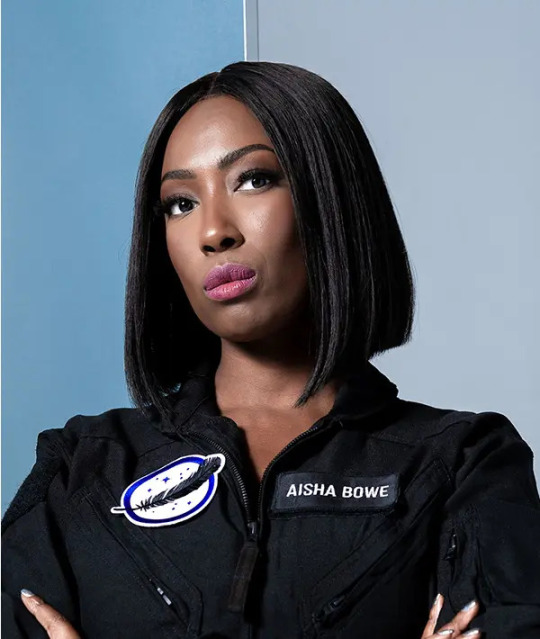
Adventuresses We Love – Aisha Bowe It was her interest in science fiction and a passion for mathematics that led Adventuress Aisha Bowe to a career in aerospace engineering. After earning her bachelor’s degree in aerospace engineering and her master’s in space systems engineering, she joined NASA’s Aviation Systems Division. Her work focused on developing algorithms in support of Air Traffic Management. It was during her time with NASA that she also began mentoring students and advocating for global STEM education.
In 2013, Bowe left NASA to found STEMBoard, a professional advisory consultancy focusing on STEM fields. “STEMBoard” she says, “was founded on the principles of integrity, diversity, and inclusion. We are the crossroads where passion, ingenuity, and intelligence thrive.”
In 2022, she’d go on to found LINGO, an edtech company helping students around the world gain essential tech skills for hardware and software design.
For her STEM advocacy work, Bowe was named the 2024 STEM for Her Woman of the Year. She’s also been awarded NASA’s Engineering Honor Award, and several others.
On 14 April 2025, Adventuress Aisha Bowe flew aboard Blue Origin NS-31, becoming the 6th Black woman, and 1st person of Bahamian descent, to fly into space. She partnered with Winston-Salem State University’s Astrobotany lab to conduct plant biology experiments during the mission. During the brief window of the flight, she also conducted experiments in human physiology.
7 notes
·
View notes
Text

Adventuresses We Love - Shirley Chisholm Adventuress Shirley Chisholm could be neither bought nor bossed. The daughter of immigrants, Chisholm’s first foray into politics was a run to represent her Brooklyn district in the New York State Assembly. It was not an easy campaign, with many in the Democratic party establishment reluctant to back a woman candidate. By appealing directly to women voters, and not being afraid to step on some toes when needed, Chisholm was able to secure the Democratic nomination and, ultimately, win the seat. She served in the New York Assembly from 1965 – 68, championing civil rights, workers’ rights, and education.
In 1968, Chisholm was elected to the House of Representatives by a 2-to-1 margin over her opponent, and in so doing became the first Black woman elected to Congress. She was initially assigned to the agricultural committee, despite coming from a very urban congressional district. While less than happy about the assignment, she used that seat to help expand food assistance programs, including working with Bob Dole to help create WIC.
In 1971, she helped create the Congressional Black Caucus and National Women’s Political Caucus.
In 1972, Chisholm set her sights even higher with a Presidential run, becoming the first Black person to run for a major party’s nomination, the first woman to try for the Democratic nomination, the first woman to appear in a Presidential debate. Her campaign was underfunded, and she was largely ignored by the Party establishment and her male colleagues, yet she’d still go on to win 153 first-round delegates at the Democratic convention before ultimately losing to George McGovern. (McGovern would ultimately lose the general election to incumbent President Richard Nixon.)
Returning to Congress, Chisholm continued to work for civil rights, workers’ rights, and the expansion of education, health care, and other social services, while also fighting against the war in Vietnam and the draft. She also became a mentor for a new generation of women Representatives. Chisholm retired from Congress in January 1983.
After a series of strokes, Adventuress Shirley Chisholm died January 1, 2005, at the age of 80. She was posthumously awarded the Presidential Medal of Freedom by President Barack Obama in November 2015, and the Congressional Gold Medal in 2024.
10 notes
·
View notes
Photo
"I feel like I'm being watched."
"Been watching for hours, but thanks for noticing!"
"What the hell?!"
"Rude."

Keezy - Patreon - INPRNT
Love at first sight <3 A new print for Rose City!
33K notes
·
View notes
Text

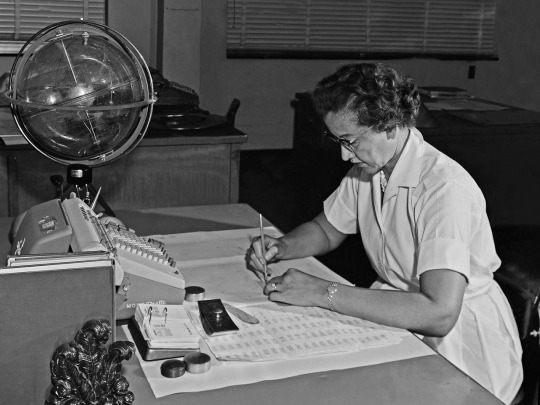
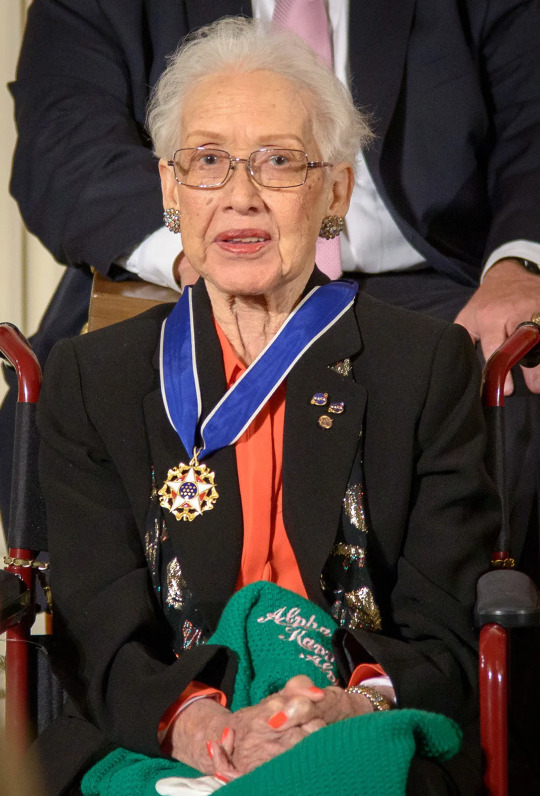
Katherine Johnson had a strong aptitude for mathematics from an early age. This skillset would lead to her graduating magna cum laude from West Virginia State College (at the age of 18!), to becoming one of the students to integrate West Virginia University, and, eventually, to her work in aerospace.
In 1953. Johnson became part of the pool of mathematicians working in the National Advisory Committee on Aeronautics’ (NACA) Guidance and Navigation Department in Hampton, VA. She was part of the team reading data from airplane’s “black boxes” and performing complicated, precise calculations with the data. One day, she was “temporarily” reassigned to the flight research team, where her grasp of analytic geometry impressed her superiors to the point that, “they simply forgot to return me to the pool.”
NASA replaced NACA in 1958, ending the “official” segregation of the Langley facility. Johnson was part Project Mercury that would send Americans into space. She calculated the trajectory for Alan Shepard’s flight when he became the first American, and second human, to go to space. John Glenn famously demanded Johnson double check the calculations a digital computer had made for the first orbital flight, refusing to fly until she made sure the machine had done it right.
Johnson continued to play a critical role in the development of America’s space program, including being part of the Apollo program, including calculating the trajectory of Apollo 11. The backup procedures and charts she worked on helped the Apollo 13 mission return safely to Earth after the disaster that cut that mission short. Johnson would also work on the Space Shuttle program, and the early days of NASA’s Mars mission before retiring from NASA in 1986.
Among her many honors, Johnson was awarded the Presidential Medal of Freedom by President Obama, NASA’s Silver Snoopy award, and the Congressional Gold Medal. Mattel also made a commemorative Barbie in her likeness, including a NASA identity badge.
Adventuress Katherine Johnson died at her home in Newport News, VA, on February 24, 2020. She was 101.
16 notes
·
View notes
Text



Adventuresses We Love – Bertha Benz Adventuress Bertha Benz was a woman with a vision, one she shared with her husband, Carl – to invent a practical “horseless carriage.” She believed in this vision so much that two years before their wedding, she used her dowry to bail out his failing company and invest in its future. The two of them would collaborate on the design and engineering of the car’s components, including its two-stroke engine, throughout the vehicle’s development. Progress was slow, but steady, and on New Year’s Eve1879 they finally got their engine to work. They continued to make improvements to the vehicle, until finally, in early 1886, Carl obtained a patent for their “motor car with gas engine operation.” The car made its public debut in Mannheim that summer, where… …nobody wanted it. There had been a few cars built before the Benz’s, enough to make everyone really, really nervous about them. Even the Vatican had spoken out against them, declaring the automobile to be a devil’s or witch’s carriage. Some localities in Germany had already outlawed the use of such vehicles, threatening to fine anyone operating them. Now, Carl was an engineering marvel, but a complete dunce at marketing. It would fall to Bertha to win people’s hearts and minds, and change the view of the automobile in their eyes. To accomplish this, she knew exactly what she had to do. She had to go visit her mom. At dawn on August 5, 1888, Bertha and her sons, Robert and Eugen, left Mannheim and headed towards Pforzheim, about 60 miles away. Today, we might not think of that as any big deal – that’s not much more than my commute to work – but in 1888, it was an Epic Road Trip. The first of its kind! The trip was fraught with challenges, not the least of which was that the car got 25mpg – but only carried about 1.3 gallons of fuel. To resolve this, Bertha bought the entire supply of ligroin – a petroleum-based cleaner – from a chemist in Wiesloch and used that to power the car. (The chemist’s in Wiesloch is still today recognized as the world’s first service station.) Bertha also found innovative solutions for some of the mechanical failures the car ran into on the way. For example, she used her hat pin to clear a clogged fuel line, and her garter to insulate a frayed spark plug wire. When the wooden blocks used in the brakes started to wear out, she stopped at a cobbler’s shop and had leather added to them – thereby inventing the world’s first brake pads. Another challenge – hills. The car had two gears – not quite enough to summit some of the hills on the route. Robert and Eugen got out and pushed it up a couple of them. Finally, after 13 hours on the road, Bertha and her boys arrived in Pforzheim. She telegraphed Carl to let him know, then enjoyed a few days with her mom before driving home. Bertha’s road trip started to change public opinion about the car, and led to her and Carl’s company being the automotive giant we know today. She also showed the importance of test drives – innovations were added to the design to overcome the issues she’d found on this trip (including adding a third gear which made hills much easier). Test drives are standard, essential practice for automobile manufacturers today, but had never been done before Bertha’s trip in 1888. Adventuress Bertha Benz died on May 5, 1944, two days after her 95th birthday. On May 3, 2024, Bertha’s 175th birthday, the German government issued a postage stamp honoring her and her contributions to automotive history.
19 notes
·
View notes
Text


Adventuresses We Love – Annie Londonderry In 1894, two Boston businessmen reportedly made a $10,000 bet that no woman could bicycle around the world in 15 months or less. Annie Cohen Kochopsky took them up on that bet. To help finance the trip, Kochopsky sought out sponsors and sold ad space on her bike. Her first sponsor was Londonderry Lithia Spring Water Company. They agreed to pay $100 in exchange for her carrying an advertising placard for them, and if she would agree to go by the name Annie Londonderry for the duration of the adventure. Annie readily agreed. On June 27, 1894, despite having only learned how to ride a bike a couple of days earlier, Londonderry set out from her home in Boston’s Beacon Hill and headed west. She carried with her a change of clothes and her pearl handled revolver. She arrived in Chicago that September, and realized she had a problem. Winter was coming fast, and there was no way she’d be able to cross the Great Plains and Rocky Mountains when the snows came. So, she reversed course and rode back to Boston. Where she started over, this time heading east. She rode to New York, jumped a steamer to France, then biked to Marseilles. From there her travels took her through the Middle East, Sri Lanka, Singapore, Russia, North Korea, China, and Japan. She left Yokohama and sailed to San Francisco, then spent the next six months bicycling across the Southwest and Midwest. Londonderry reported that she was held captive while biking across China at the height of the Sino-Japanese War. Still, it seems the greatest dangers she faced were from animals - she and another cyclist were nearly killed by a runaway horse and rider in California; while a collision with a herd of pigs in Iowa left her with a broken wrist. Londonderry arrived back in Chicago on September 12, 1895, and claimed her prize. She’d made the trip with 2 weeks to spare, becoming in the process the first woman to circumnavigate the globe by bicycle. Anne Cohen Kochopsky, aka Annie Londonderry died from a stroke on November 11, 1947. She was 77 years old.
27 notes
·
View notes
Text


Adventuresses We Love – Muriel Thompson
Adventuress Muriel Thompson was never one to let preconceived notions about her gender stand in her way. She started driving the family motor car at an early age, sparking her passion for driving and, eventually, racing.
The UK’s Brooklands Automobile Racing Club did not allow usually allow women to race but made an exception for a “Ladies Bracelet Handicap” race on 4 July 1908. Thompson was one of seven competitors in the all-women race. Thompson outpaced the pack, winning the race by several meters over Ethel Locke King.
As the crowd gathered around her following the victory, someone cried out, “women deserve the vote now!” An ardent suffragist, Thompson readily agreed. She’d go on to become the chauffeur for suffragist leader Emmeline Pankhurst’s 1909 tour of the UK, driving an Austin painted green with purple stripes and white tires, the colors of the suffragist movement.
Thompson continued racing until the outbreak of World War I. She joined the First Aid Nursing Yeomanry as a driver. In May 1918, she and her unit were deployed to the site of an aerial bombing in Arques. While working to help the injured, a second air raid began. The women were ordered to take cover. They refused and continued to get the wounded to safety while the bombs fell all around them. Thompson was awarded the Croix de Guerre and the Military Medal for her actions that night.
Adventuress Muriel Thompson returned home in October 1919. She died in London from encephalitis lethargica on 3 March 1939. She was 63.
18 notes
·
View notes
Text
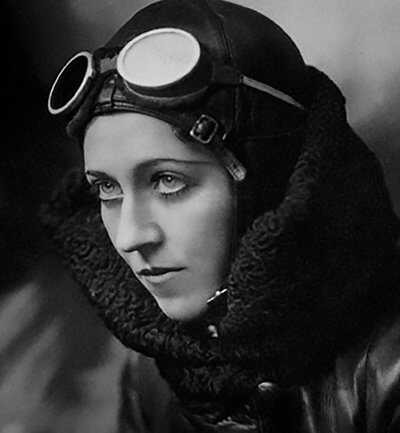


Adventuresses We Love – Amy Johnson Adventuress Amy Johnson started taking flying lessons at the London Aeroplane Club in 1928. Typical chauvinistic attitudes of the day meant she had to spend twice as much time in training as her male colleagues, but she did finally earn her pilot’s license in 1929. Later that year, she became the first British woman to qualify as an aircraft ground engineer. She then set her eyes on another goal – Australia. On May 5, 1930, with only 75 hours flying time under her belt, Johnson took off from Croydon in her deHavilland Gipsy Moth she’d named Jason. The flight would not be an easy one. Along the way, she’d battle sandstorms, monsoons, and blistering heat. As she sheltered from a sandstorm, packs of wild dogs got a little too close for comfort. Low on fuel, she made an emergency landing on a military parade ground in Pakistan, scattering the soldiers assembled there in the process. Finally, on May 24, she landed in Darwin, Northern Territory, becoming the first woman to fly solo from England to Australia. For this feat, she was awarded the Harmon Trophy, and a CBE by King George V. This was the first of several long-distance record flights for Johnson. In 1932 she flew from London to Cape Town, South Africa, beating the previous record (set by her husband,) by 11 hours. During World War II Johnson flew for the Air Transport Auxiliary, ferrying aircraft around England. On January 5, 1941, Adventuress Amy Johnson disappeared when the plane she was ferrying crashed into the Thames estuary. She was 37 years old; her body was never recovered. Jason is on permanent display at the Science Museum of London. Photo of Jason courtesy of the Science Museum of London, shared under the creative commons license.
28 notes
·
View notes
Text
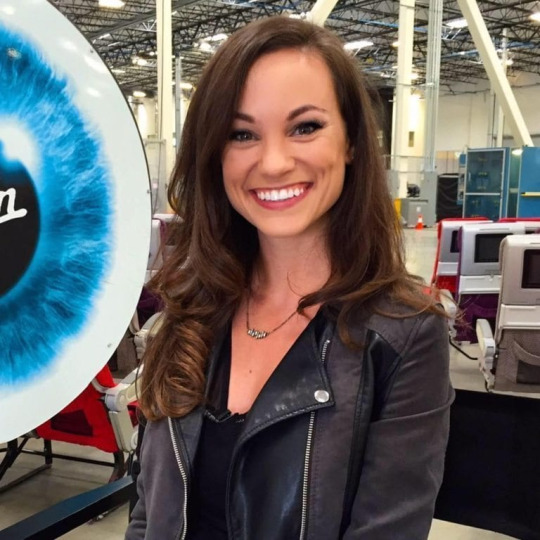

Adventuresses We Love – Emily Calandrelli
For Adventuress Emily Calandrelli, even the sky is no limit. While working towards her Masters degrees in Aeronautics and Astronautics, and Technology and Policy, she interned with NASA, where she was part of the Phoenix Mars Lander project. After college, she began a career as a science communicator. She’s been the host and executive producer of Fox’s Xploration Outer Space, as well as the host of Netflix’s Emily’s Wonder Lab. She’s the author of several children's books introducing kids to science and technology, and a strong advocate for space exploration and STEM education, especially for young women.
On November 22, 2024, Adventuress Emily Calandrelli flew aboard Blue Origin NS-28, becoming the 100th woman to travel to space.
11 notes
·
View notes
Photo
Oh, hey, I was thinking about this post earlier!
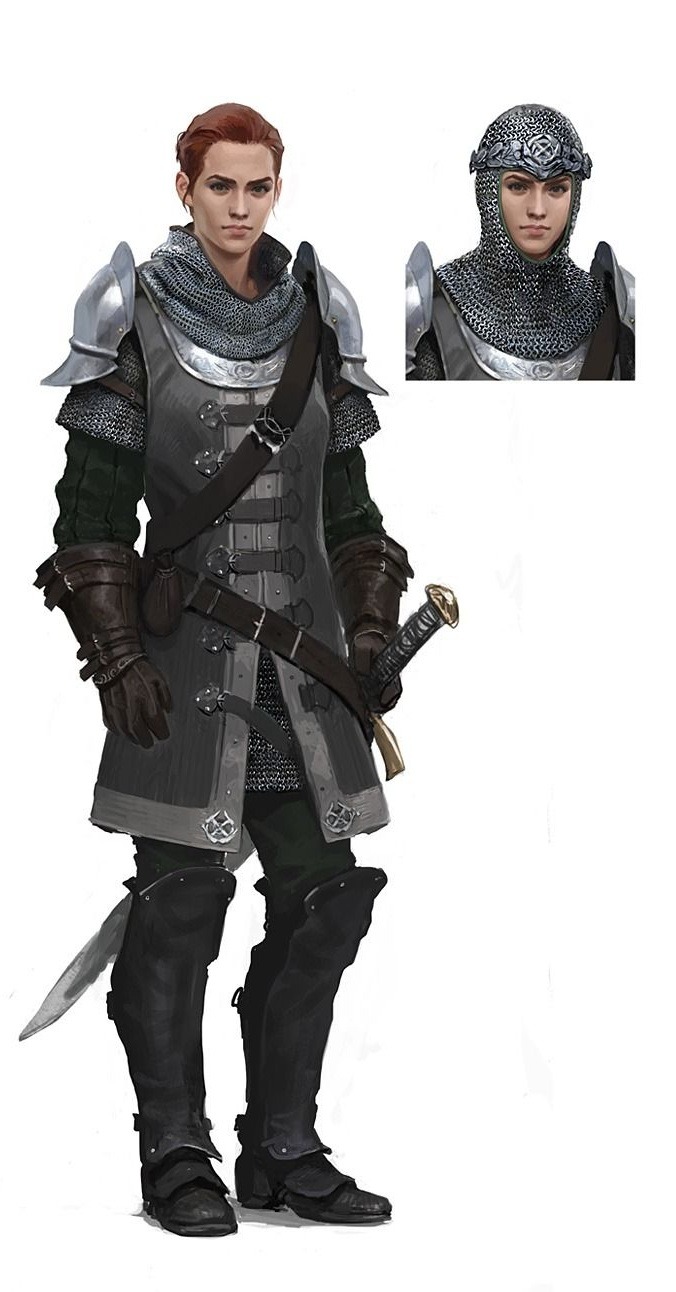
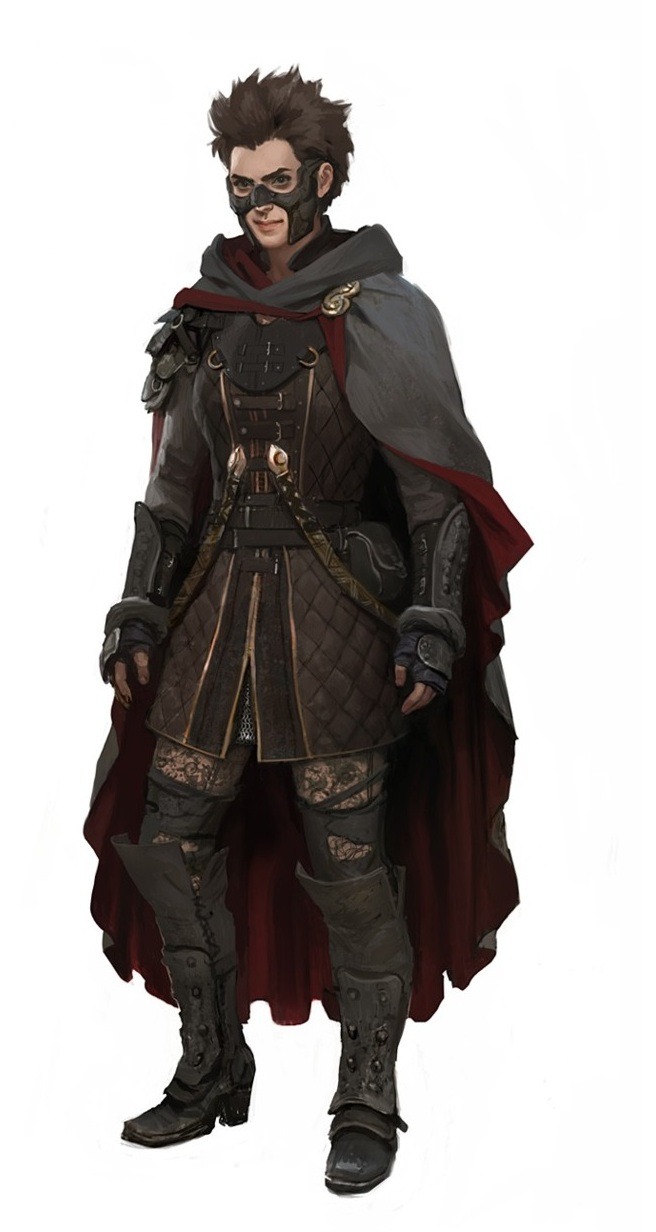

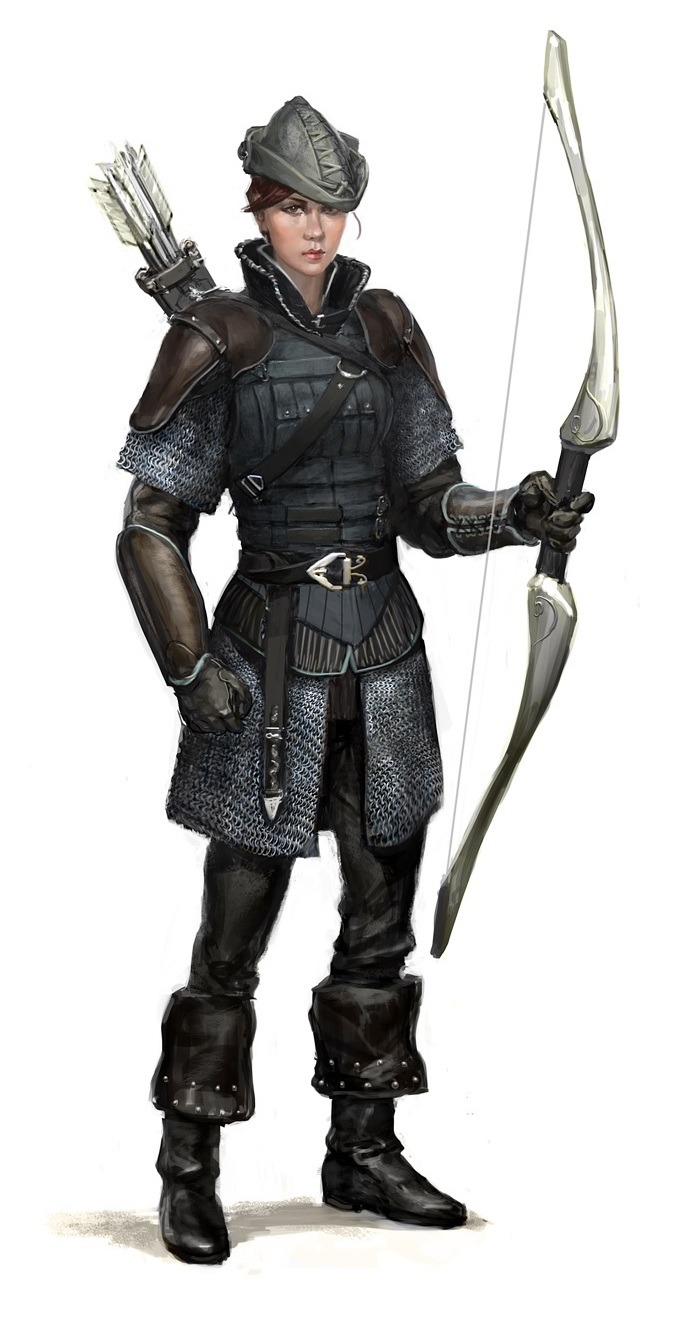
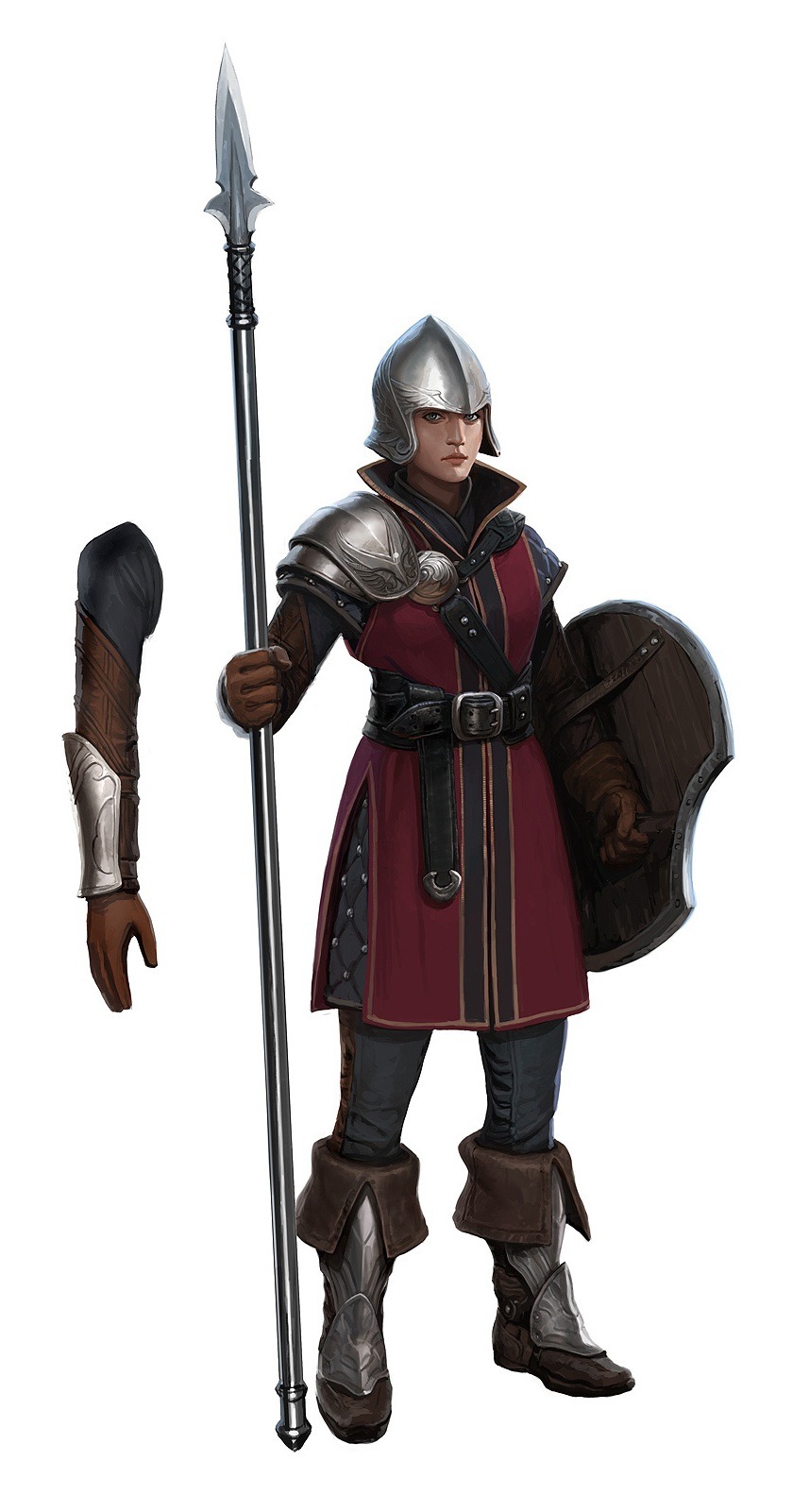
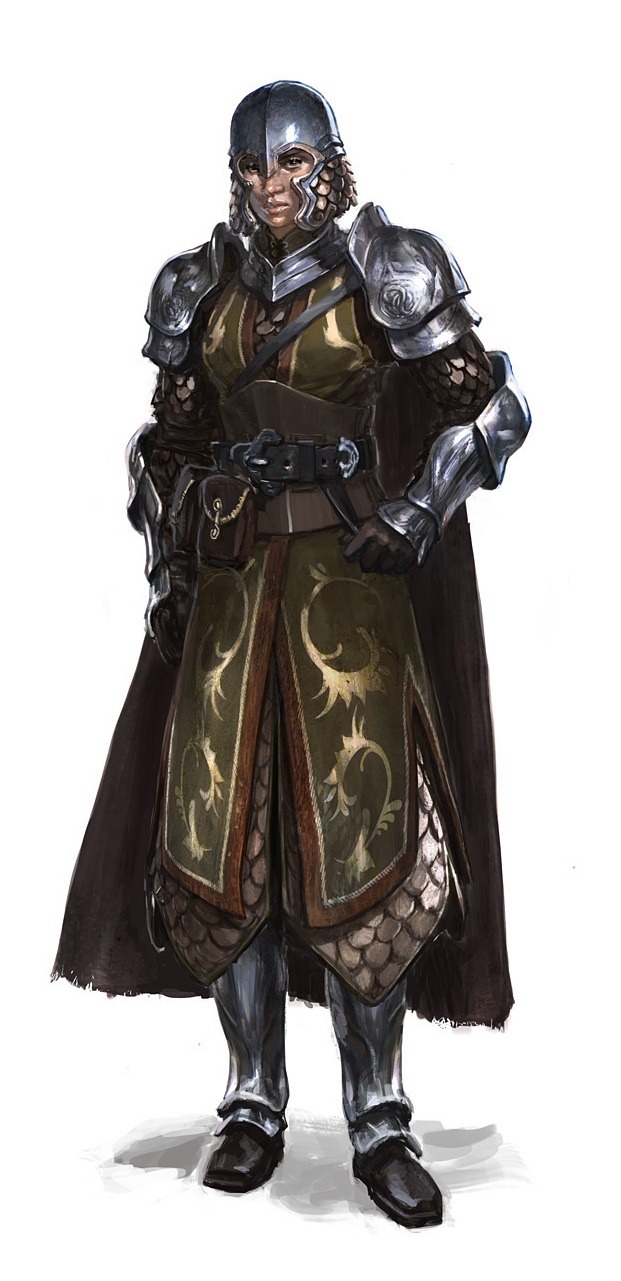
Concepts for “The Lord of the Rings Online” by Wesley Burt.
43K notes
·
View notes